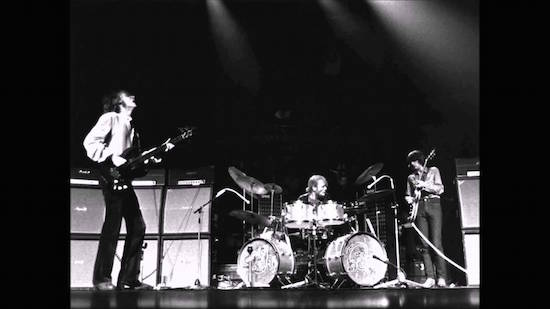Let’s say that you’ve got a verse that consists of a short melody and chord progression that repeats several times before it reaches the chorus. That might start to sound boring to you, and I want to suggest a way to alleviate that boring sense of repetition.
How much a short melody can or should repeat before moving on to something else is up to you; there are no rules about it. Obviously, you’ll know when that starts to get boring.
 Got a melody, but don’t know how to add chords to it? “How to Harmonize a Melody” will show you the secrets to finding the chords that work well with your tune. It’s part of the 10-eBook Bundle. Read more..
Got a melody, but don’t know how to add chords to it? “How to Harmonize a Melody” will show you the secrets to finding the chords that work well with your tune. It’s part of the 10-eBook Bundle. Read more..
Here’s an idea for dealing with a repeating idea when you don’t know what else you can do: change key and do the same idea in the new key. Let’s say that you’ve got a short melody that you’re singing over a standard progression like: C-Bb-C-Bb…
So let’s assume that after a few run-throughs of this you’re ready to try something new. One suggestion would be to immediately jump into a new key and transpose your melody to whatever the new key would be.
There is no theory in place to say what that new key should be, so it’s worth experimenting with it. You might try this, for example — a key change that takes you from the key of C up to Eb major:
C Bb C Bb C Bb C Bb |Eb Db Eb Db Eb Db Eb Db
Or you might find that a smaller leap upward might be more in line with what you’re looking for, let’s say from C major to D major:
C Bb C Bb C Bb C Bb |D C D C D C D C
When you jump to the new key, you transpose your original chord progression so that the chord relationships are all the same: D-C is the same relationship as C-Bb.
When you change key like this, you have 2 likely options for what you can do after your venture into the new key:
- Move back to the original key and “start over.”
- Continue to the chorus using your new key, and find a way to modulate back to the original key at the end of the chorus for the start of verse 2.
Take a listen to Cream’s “Sunshine Of Your Love” to get a sense of what this might all sound like. Verse 1 starts in D minor, and this opening melody repeats (with slight variations) several times. This is then transposed to a new key, but only for two run-throughs of the melody. It then gets bumped back down to the original key for the next two. This is followed by a pre-chorus — a section whose main purpose is to build energy to the refrain.
So Cream’s solution to the constantly repeating melody/chords is this:
Original key (D minor) –> Up a 4th to G minor –> Back to original key (D minor)
Changing key is a great way to extend a musical idea when you really like that idea. It sounds to the audience as if you’ve moved on to something new, when in fact you’re really just repeating your old idea in a new key.
I’ve mentioned in a previous post how Sia Furler does this in her song “Soon We’ll Be Found.” I did a video several years ago where I discuss how she structures the melodies of her song to move ever higher, but you can hear in this description how she moves from an original key of C minor, and then repeats the melody by moving up to the key of Eb major. That requires adjustments to the melody, of course, and it’s another option for you: changing from major to minor, or vice versa.
If you took your original progression of C-Bb and moved it up( or down) to G minor, you’d get this:
C Bb C Bb C Bb C Bb |Gm F Gm F|C Bb…
So as you can see, there are many options for repeating a phrase that avoid simply repeating the idea as-is. Use your imagination… there are many possibilities.
 Written by Gary Ewer. Follow Gary on Twitter.
Written by Gary Ewer. Follow Gary on Twitter.
 “Chord Progression Formulas” show you how to create dozens of chord progressions in mere moments. With lots of sample progressions you can use right away. It’s part of “The Essential Secrets of Songwriting” eBook Bundle packages. Get today’s 10-eBook Deluxe Bundle deal.
“Chord Progression Formulas” show you how to create dozens of chord progressions in mere moments. With lots of sample progressions you can use right away. It’s part of “The Essential Secrets of Songwriting” eBook Bundle packages. Get today’s 10-eBook Deluxe Bundle deal.











Not sure I’d really call what’s going on in the Cream song a “key change.” They’re just following a blues progression. I IV I V
Yes, you’re right, and in fact the Sia Furlman example is the better example of key change in this instance. The Cream song is more a demonstrator of the fact that a melodic fragment can be moved around as chords (not necessarily key) move up or down. I’ll edit that to make it clearer.
Thanks very much!
-Gary
Hi Gary. i’d say there is a modulation upwards to g minor because the d note definitely doesn’t sound like the tonic anymore in the 2nd half of the verse when the riff shifts upwards
Hi Matt – I think that what’s making it sound as though there is a modulation is the fact that the opening riff is transposed, including all the chromaticisms. But I think as “Cheeky” says, it’s just following a typical blues progression. The hook that sits on G moves back down 4 bars later to D minor. That differs from “Soon We’ll Be Found”, which does modulate upward, from C minor to Eb major.
Cheers!
-Gary
Thanks, Matt! That does help! Great answer!
Hi, Gary,
I’m confused. When I see B-flat C, I don’t think key of C (I think F or D minor) And same for C D…don’t think key of D (I think G or E minor). At least not knowing more or where our ear wants to get back to (i.e., Tonic).
Can you explain more?
I appreciate what point you’re making in the article, though! I’m just still hung up on those keys.
Hi Chris,
I think I might be able to help you out here. With the two examples you’re confused with you have to think of the progression as a 1-b7 (flat 7) progression that simply is getting transposed up and down in both the C maj to Eb maj and the C maj to D maj examples given. To get a feeling for the flat 7 chord’s relationship to the 1 chord play a 1-4-5-1 progression (in the key of C maj that would be C-F-G-C) and repeat it a few times to get the C firmly rooted in your head as the tonic then play the flat-7 chord (in the key of C: Bb) after that last C and you should hear how it relates to the C.
I think Gary chose this 1-b7 progression as an example because in the case of transposing upwards a minor 3rd (ex: from Cmaj to Eb maj) the b7 chord creates a smooth transition from the original key of C to Eb. In the case of the key of Dmaj the C chord would be the b7 of D. There’s a somewhat smooth transition from the key of C to the key of D through the use of the Bb chord (b7 of C) moving to the Dmaj chord (tonic of the new key that is D).
Hope this helps (and its not too technical). If not then sorry for wasting your time by making you read this. Let’s hope that’s not case! But I’m sure Gary can elaborate if need be.